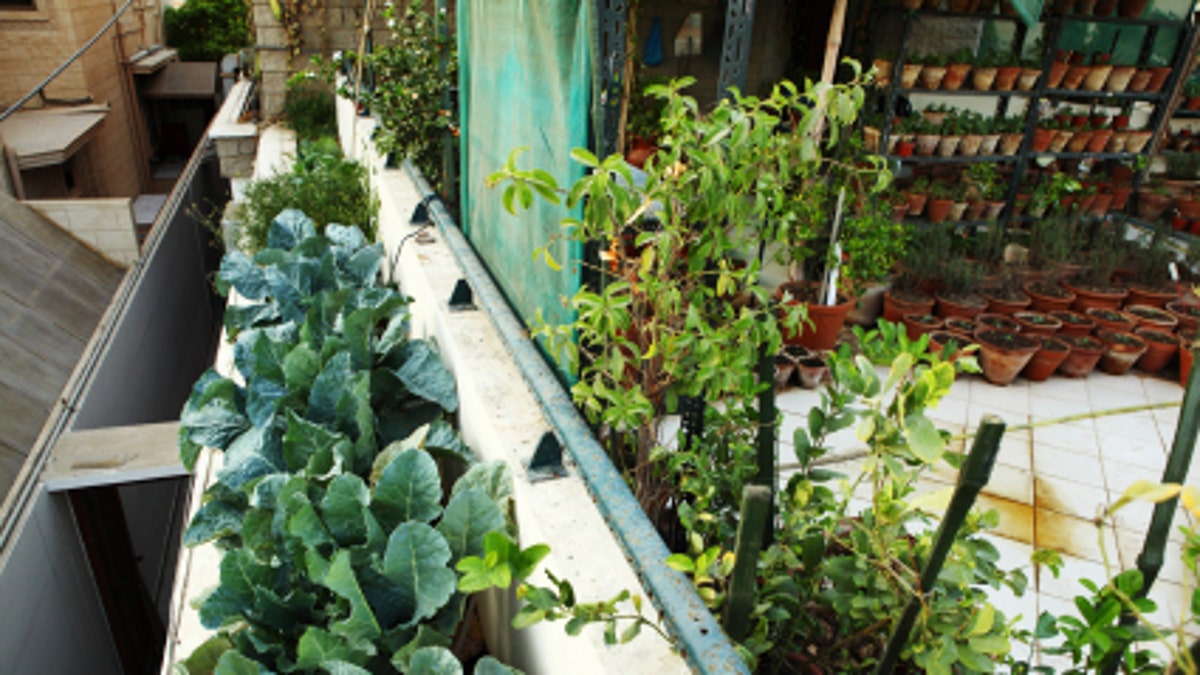
Moving to a tiny apartment in a big city doesn't mean you have to give up your green thumb. Here are some tips for growing plants and produce in an urban setting.
Think vertically
"When you hardly have room to store your groceries, finding room to grow produce is another big challenge," says Ric Scicchitano, the senior vice president of food and beverage at Corner Bakery Café. He suggests trying a vertical vegetable garden, using hanging baskets and small containers or utilizing shelves to garden without taking up a lot of valuable space.
"Compact varieties and herbs do well in hanging baskets, but other produce will thrive in something as small as a pot or container," Scicchitano says. "I'm a big fan of pairing tomato and basil together when I'm cooking and find it easy to combine these in beds or planters while they're growing, too."
Find the right location
William Moss, an expert urban gardener with Miracle-Gro, says that herbs tend to grow well in urban environments if you can find the right location for them. Look for a window that receives good light, ideally from the south or west. He adds that you should plan to rotate pots to keep the plants growing straight and tall, as the plants will send out new growth in the direction of the sunlight.
"Basil and parsley, in particular, have a wonderful scent and are relatively easy to grow," Moss says. "One note on mint -- this herb spreads quickly and can become unmanageable in the yard. So instead, plant mint in containers where they do extremely well."
Moss says that the key to successfully growing a plant in a hanging garden is to keep it well-watered but not over-watered.
"The trick is to allow soil to become mostly dry to the touch," he says. If you put your finger in the potting mix up to your first knuckle and the soil feels dry, Moss says it's time to water.
Look for a community garden
If you want to garden the traditional way, you can get involved with a community garden in your area.
"Most programs allow you to care for your own plot completely on your own and take home anything that you harvest," Scicchitano says. "Many urban environments have a few and the community-aspect of the garden allows gardeners to share and swap produce for more variety."
Check out the American Community Gardening Association (ACGA) website to locate a nearby community garden.
Find plants that thrive in the shade
Scicchitano points out that the urban gardener may run into problems finding a space with enough direct sunlight. Scicchitano's recommendation for circumventing this problem is to plant items like lettuce and greens, which will grow with limited exposure to direct sunlight.
Even if you live in an urban environment and have the yard space, you may still have to deal with heavily shaded gardens. Jessy Berg, the president and co-founder of the Palo Alto, Calif.-based online landscaping design company Habitat Design, suggests the following plants and flowers for shaded spaces:
- Ferns
- Hosta
- Hydrangea
- Bush Lily (Clivia)
- Fuchsia
- Dogwood
- Camellia
- Azalea
- Rhododendron
- Boxwood
- Jasmine
"City pollution creates an added challenge, so remember to fertilize for good health," Berg adds.